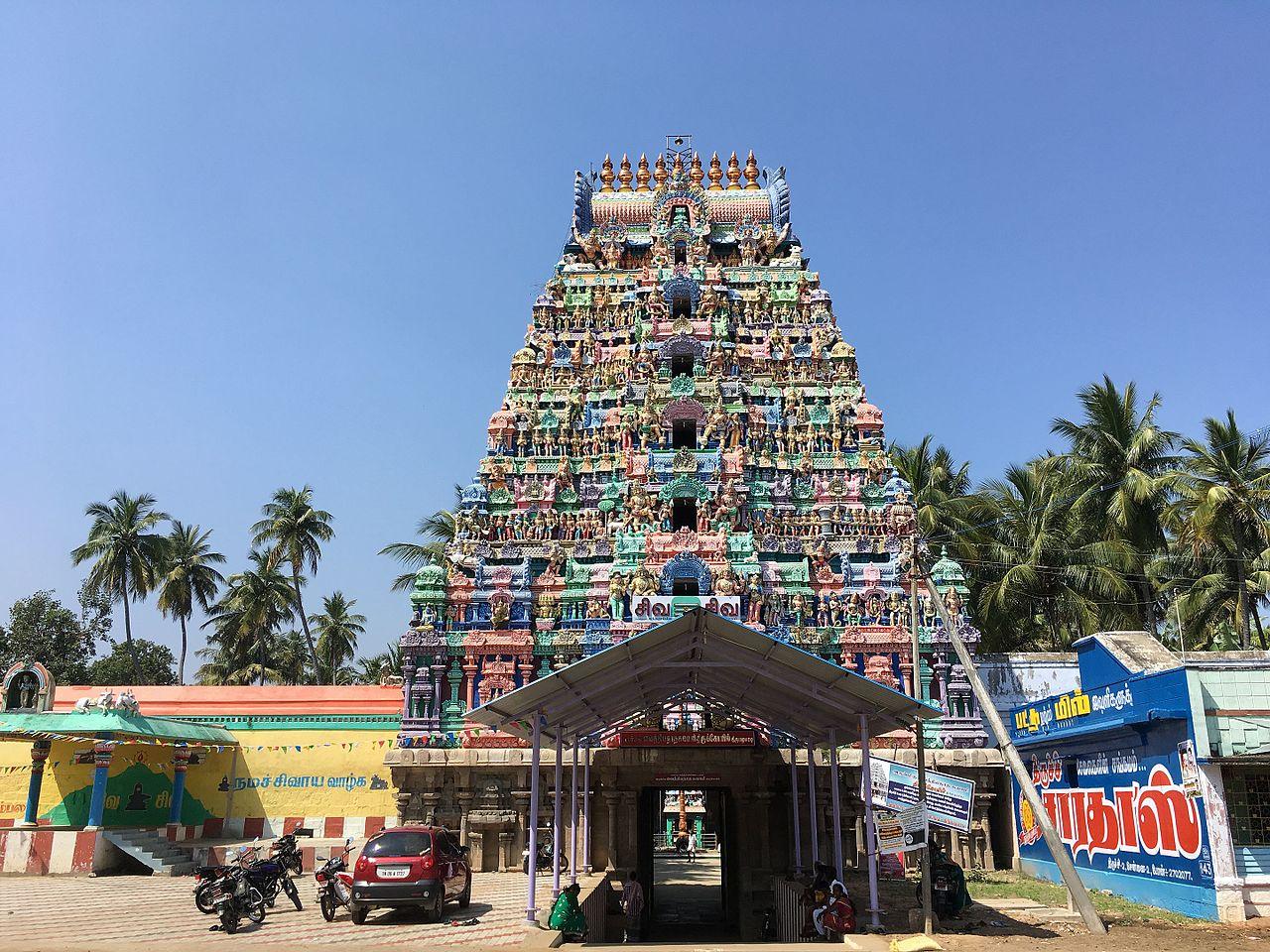Sage Siladha, who resided in Thiruvaiyaru, performed intense penance seeking a child. A divine voice instructed him to conduct the Puthrakameshti Yajna, promising that he would find a box containing a child while tilling the land for the ritual. The voice also warned that the child would have a lifespan of just 16 years. Following these instructions, Siladha found the box and, upon opening it, was astonished to see a child with three eyes, four shoulders, and a crescent moon adorning his head. Shocked, he closed the box and opened it again, finding a normal human child inside. He named the child Japesar.
As Japesar approached the age of 14, with only two years left of his destined life, Sage Siladha became deeply distressed. To alleviate his father's sorrow, Japesar undertook severe penance, standing on one leg on the Ayana Theertha tank in Thiruvaiyaru. Despite the creatures of the tank beginning to consume him, Japesar remained steadfast. Moved by his devotion, Lord Shiva cured him completely and granted him a long life. Japesar later married Suyasambikai in Thirumazhapadi and continued his penance. His devotion was rewarded with the position of the chief of Shiva Ganas, and he was elevated to the role of the first security chief at the first gate of Kailash, earning the name Nandhi Deva.
Sthala Purana :
Sage Siladha, residing in Thiruvaiyaru, performed intense penance on Lord Shiva, seeking the blessing of a child. In response, a divine voice instructed him to conduct the Puthrakameshti Yajna, assuring him that he would discover a box containing a child while tilling the land for the ritual. However, the voice also warned that the child would have a lifespan of only 16 years. Following these instructions, Siladha found the box, and upon opening it, he was startled to see a child with three eyes, four shoulders, and a crescent moon adorning his head. Shocked, he closed the box and then reopened it, finding a normal human child inside. He named the child Japesar.
As Japesar approached the age of 14, with only two years remaining of his destined life, Sage Siladha became deeply sorrowful. Sensing his father's distress, Japesar began a severe penance, standing on one leg in the Ayana Theertha tank in Thiruvaiyaru. Despite the creatures of the tank gradually consuming him, Japesar remained unwavering in his devotion. Moved by his penance, Lord Shiva healed him completely and granted him a long life. Later, Japesar married Suyasambikai in Thirumazhapadi. Even after his marriage, Japesar continued his penance and was eventually rewarded with the position of chief of Shiva Ganas. He was further honoured as the first security chief at the main gate of Kailash and was given the name Nandhi Deva.
